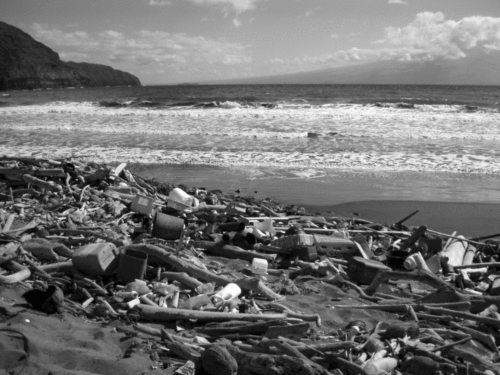Dramaturgy by Helen Raines, Book-It Artistic Intern

“I’ve been thinking about the Great Garbage Patches—those enormous masses of garbage and debris floating in the oceans? You must have heard about them…”
—Oliver, A Tale for the Time Being
In the middle of the North Pacific Gyre is the Great Pacific Garbage Patch. It is a massive concentration of plastics, sludge, and other debris that has been dumped into the ocean over time. First discovered between 1985 and 1988, it extends over an undetermined area. The patch is not easy to see because it consists of very small pieces of debris that are almost invisible to the naked eye, and most of its contents are suspended beneath the ocean’s surface, thus making it almost invisible to satellite photography.
Because of the small sizes of the debris, it is easily swallowed by fish, birds, and other wildlife; marine birds have been found with plastic in their digestive tracts, and baby birds have died from being fed plastic by their mothers. The toxins in the plastic are then released into fish, which are often eaten by humans, resulting in the ingestion of toxic chemicals.
Steps have been taken to stop the flow of garbage into the oceans and to clean up the Garbage Patch, but progress remains slow. Around the world, organizations have arisen to clean up the Pacific Ocean, and to educate and raise awareness about the garbage pollution.